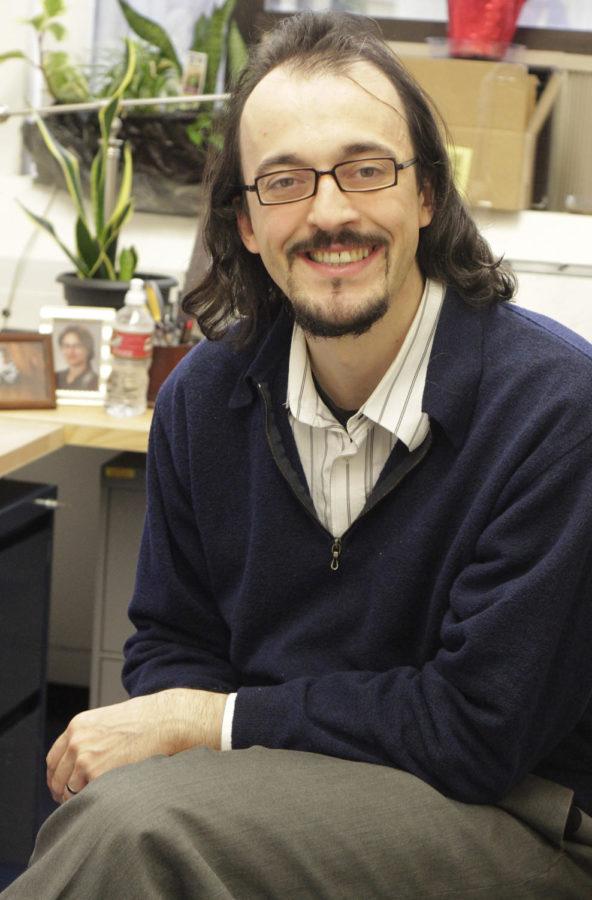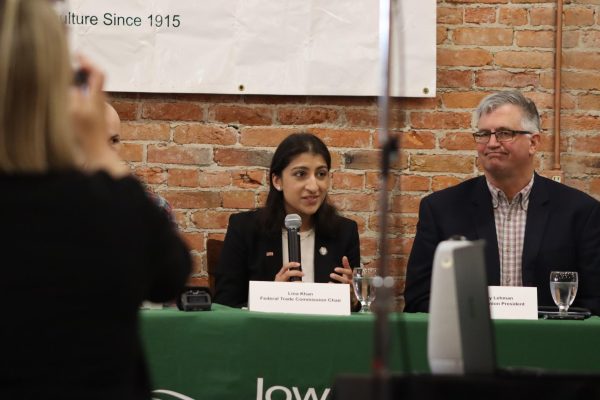Cademartiri develops synthesis for nanowires, potentially opening doors in technology
Tiffany Herring/Iowa State Daily
Ludovico Cademartiri, an assistant professor of materials science and engineering, says his new findings, called nanowires, could open many doors in technology. Nanowires are materials 50 thousand times thinner than human hair.
January 16, 2014
Ludovico Cademartiri has developed methods to make new materials using crystals and polymers.
Cademartiri, an assistant professor in materials science and engineering, says his new findings, called nanowires, could open many doors in technology. Nanowires are materials 50 thousand times thinner than human hair.
Cademartiri said that he developed the synthesis for nanowires because he was curious.
“In the case of nanowires, we developed the synthesis out of curiosity,” Cademartiri said. “Then I noticed that their shape was very reminiscent of polymer molecules. That was the observation that spurred this whole area of research, and it turned out these nanowires are, indeed, remarkably similar to polymer molecules.”
Cademartiri also said that, often times, someone’s best research comes from unusual observations.
“What I consider my best research, like this one on nanowires, originated usually from unusual observations, often of unintended consequences of an experiment,” Cademartiri said. “This is why I believe that looking into unusual places is vital to the long-term health of scientific progress. To expect truly new discoveries to originate entirely out of prediction is, in my opinion, missing what is the most important contribution the human brain can make to research in the long term: finding patterns and having an intuition of their importance and meaning.”
In the case of nanowires, Cademartiri believes that the discovery could hold significance.
“I believe that shaping metals and ceramics in the form of nanowires could provide them with some of the properties that we traditionally associate exclusively with polymers,” Cademartiri said.
Santosh Shaw, a graduate student who helped Cademartiri with research and development, shares the same beliefs.
“These ultrathin nanowires help us to bridge the gap between the two classes of materials: polymers and crystals,” Shaw said. “Evidence of these nanowires growing and showing properties like polymers challenge our textbook knowledge of materials. Research on these nanowires is still in their very early stages, but the more we explore, the more it will unveil the uniqueness and applications of it.”
Shaw said research on these nanowires has raised lots of eyebrows around the scientific world, which will be beneficial for this growing field.
Curiosity is a driving factor for Shaw, as well.
Shaw said fundamental research on these nanowires is interesting for the field of materials science.
“Crystals are known to be rigid, whereas polymers to be flexible; however, our novel crystalline nanowires show flexibility of a polymer molecule, which was never known or existed before,” Shaw said. “This whole idea of exchange between two classes of materials creates lots of curiosity that ultimately drives us into this research.”
Cademartiri explained that the creation of nanowires is done by a relatively simple process.
“They are formed into a hot solution of solvent by reacting two precursors together,” Cademartiri said. “Once purified, the nanowires are stable in solution as colloids.”
Shaw said that Cademartiri is a great motivator, and that everyone has learned a lot from him.
“[Cademartiri] has always been very motivating and professional about the research going on in the lab,” Shaw said. “This gives us immense opportunities to learn the way research is done by eminent and prolific scientists. [Cademartiri] always motivates and pushes you to realize your ultimate potential and he regularly meets with us to keep tabs on our research progress, which really benefits us a lot.”

















